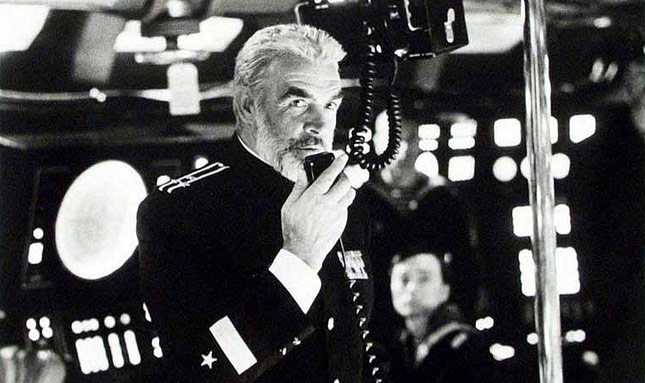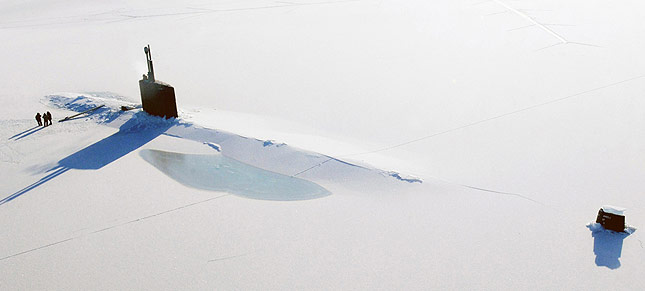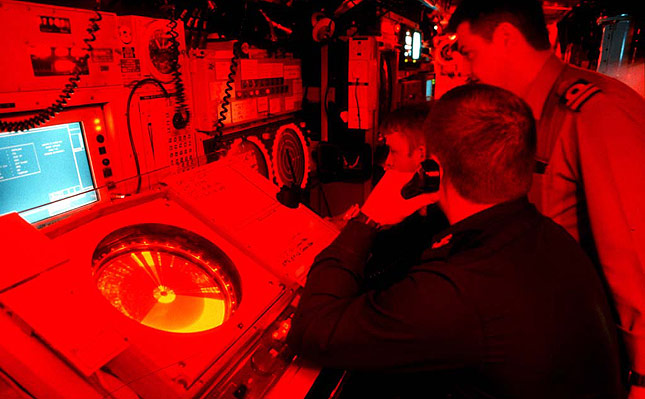Dawn of Putin’s ‘Golden Fish’: Will the West Tremble?
With the advent of a new class of nuclear-powered attack submarine in the Russian Navy it seems the Kremlin once again has a ‘golden fish’ it hopes will make the West tremble in fear of awesome undersea warfare capabilities.
The first of eight such boats currently planned, Severodvinsk, was commissioned into the Northern Fleet at the turn of the year, having first been laid down as long ago as December 1993. Her construction and completion stalled during that period when the former Red Navy all but withdrew from its old Atlantic hunting grounds.
Today, with President Vladimir Putin determined to project a strong maritime presence around the world – and with the petro dollars to afford it – new submarines are top of the agenda. And so the order was given to get Severodvinsk finished and into service – some sources claim that ultimately a dozen of these new SSNs could be built.
The Severodvinsk Class boats are also designed to be land attack platforms, packed with cruise missiles in addition to being hunter-killers seeking and destroying enemy submarines
The desire to awe the West is clear. When a ballistic missile submarine named Yuri Dolgoruky – the first SSBN completed for Russia’s navy in two decades – was commissioned in January 2013, a former Russian ambassador to NATO no less tweeted: ‘Tremble bourgeoisie! You’re screwed :)’.
While the name boat of the Severodvinsk Class (as NATO knows them, or Yasen if you are Russian) is advanced enough – being a development of the formidable Akula II type – it is the second, Kazan that promises so much.
Currently under construction at Sevmash on the White Sea, rather than being a development of a previous class like Severodvinsk herself, Kazan uses all new technology that aspires to raise the bar. A third in the class, Novosibirsk, was laid down in the summer of 2013 .

The new Russian attack submarine Severodvinsk on sea trials. Photo: Sevmash.
Kazan is likely to be the most expensive attack submarine ever (but if the Russians follow Western patterns, the cost will come down the more that are built).
With the final bill for Kazan alone rumoured to be around £3 billion (depending on your sources, it could be ‘only’ £1.3 billion), she exceeds the bill for even the super expensive Seawolf Class boats of the US Navy (three boats, commissioned 1997 – 2005).
The most recent edition of the US Naval Institute’s ‘Combat Fleets’ guide to the navies of the world suggested Severodvinsk and her sisters will be fast – capable of reaching 40 knots submerged (and with a top stealth speed of 20 knots). Reasonably deep diving, they reportedly have a maximum operating depth of more than 1,500 feet.
The Russians are of course not new to the game of submarine one-upmanship with the West, most notably via the Alfa Class SSNs, which were developed in the late 1960s and 1970s.
Back then – as I explain in book ‘Hunter Killers’ – the Soviet Navy truly shocked the West. For the Alfa could dive deeper and go faster than anything ever seen before. Money was no object for the Alfa either, which is why the type was nicknamed the ‘golden fish’.
One astonished Soviet submarine officer thought the Alfa’s radically streamlined shape was stunningly beautiful – more a work of art than a product of industry. He declared: ‘I felt as if I had just discarded my tractor and boarded a spaceship.’
The amazing acceleration rate enabled the Alfa to go from 6 to 42 knots in just 120 seconds but the use of liquid metal for reactor coolant was extremely radical – and very dangerous. The titanium-hulled Alfa’s reported maximum diving depth was more than 2,400ft, which was twice that of any contemporary NATO or Soviet boat. The problem with such high turn of speed – and the Alfa could actually manage up to 45 knots – was that it created a lot of noise.
The Alfa was fitted with six torpedo tubes and capable of carrying maximum of 18 Anti-Submarine Warfare (ASW) missiles or torpedoes. However, as pointed out by one of the principal players in the ‘Hunter Killers’ narrative, the likelihood of an Alfa actually being able to fight at maximum depth or speed was slim to non-existent.
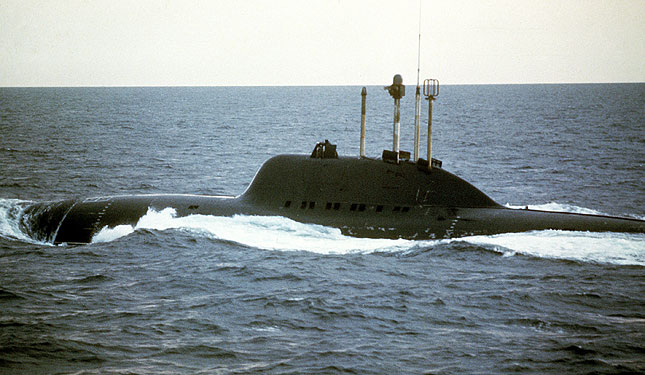
A port view of an Alfa Class nuclear-powered fleet submarine underway during the Cold War. Photo: US DoD.
In the early 1980s Doug Littlejohns pondered the so-called ‘golden fish’ and asked himself: ‘What was the tactical point of the Alfa?’ At the time NATO worried that its torpedoes would not be able to reach an Alfa at the Russian SSN’s maximum depth, due to pressure crushing the weapons. Littlejohns felt that nobody could deny ‘the Alfa was a huge step forward in submarine design’. There again, while it could go deeper and a lot faster than NATO boats that was nullified by the noise. Littlejohns asked: ‘What is the point of going down there when there is no one down there? Why spend all that money?’ He decided the tactical advantage for the Alfa was that it could ‘outrun and out-dive a torpedo, but that is about it.’
As soon as the Alfa came back up to actually try and fight NATO boats it would be nailed due to its noise signature. The British response to the Alfa, and other increasingly sophisticated Soviet boats such as the Victor, was the Swiftsure Class – a stealthy, fast submarine that could dive deep and fight well.
As recounted in ‘Hunter Killers’ the honour of bringing the first of the new Swiftsures through trials and into service in the early 1970s fell to Commander Tim Hale. He thought ‘Swiftsure represented an enormous shift in technology, a major increase in the size, endurance and capabilities.’ Having joined his first boat 16 years earlier Hale found the leap forward astonishing, from a comparatively primitive WW2-era diesel, in which water would have to be rationed on patrol and oxygen carefully conserved, to a big nuclear-powered beast that had no limits on either and possessed the power to run sophisticated sonars and weaponry.
Of course the Soviets had to try and equal the balanced capabilities of the Swiftsures and the US Navy’s 688 Class attack submarines (also known as Los Angeles Class). They used espionage to gain the technological leg up to produce the Victor III Class boats, which began to enter service in the late 1970s, and Akula I Class from the mid-1980s.
After the blind alley of the Alfa the Russians achieved their enormous leap thanks to major assistance from traitors in American naval ranks who sold them vast amounts of secrets. They gave the Soviets technical knowledge that was previously lacking to produce submarines that came close to parity with the West’s.
There’s no doubt today’s Severodvinsk Class will be on the cutting edge and formidable vessels. The Russian Navy submarine force has always been the most elite and prestigious element of the Kremlin’s military, so spending billions earned from exploiting oil and gas revenues on new nuclear-powered submarines is entirely in line with that philosophy.
President Putin has made no secret of his determination to build up the Russian Navy to once again act as a powerful global political and military tool in true Soviet style. The fact that his admirals, generals and defence ministers call him ‘Comrade Commander-in-Chief’ is a pretty good indication of how the former Cold War KGB officer sees things.
While they may not necessarily exceed the capabilities of the Royal Navy’s new Astute Class SSNs or the Virginia Class in the US Navy, the Severodvinsks will give the two principal submarine operating nations of the West a run for their money.
The real test of worth for Putin’s 21st Century ‘golden fish’ will, though, reside in the cutting edge sonars and weapons the new boats will be fitted with. If they malfunction and don’t deliver the goods, then Kazan and her sisters will be more bloated whales than killer sharks.
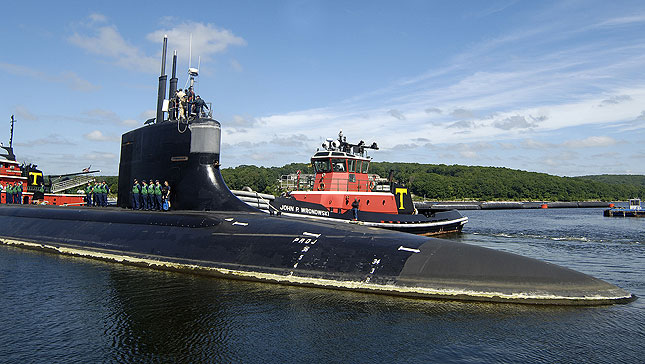
The American submarine USS Seawolf, until Kazan, second of Russia’s new Severodvinsk Class boats, the most expensive nuclear-powered attack boat ever constructed. Photo: US Navy.
